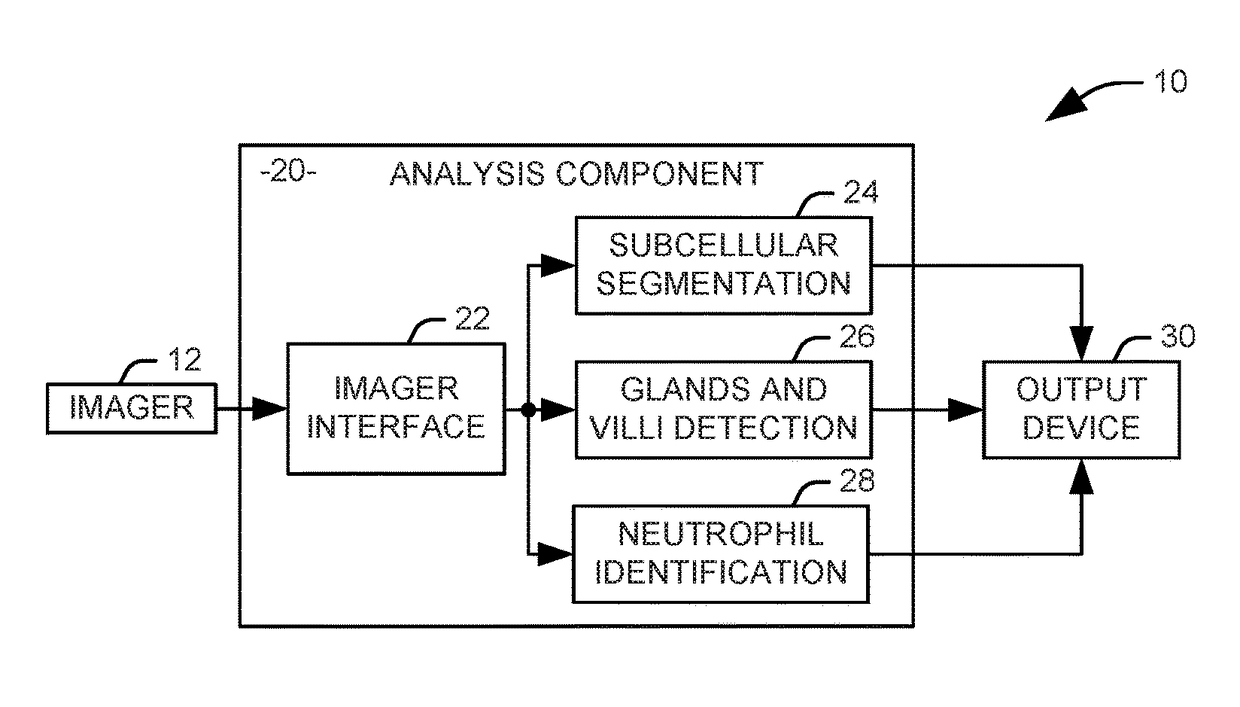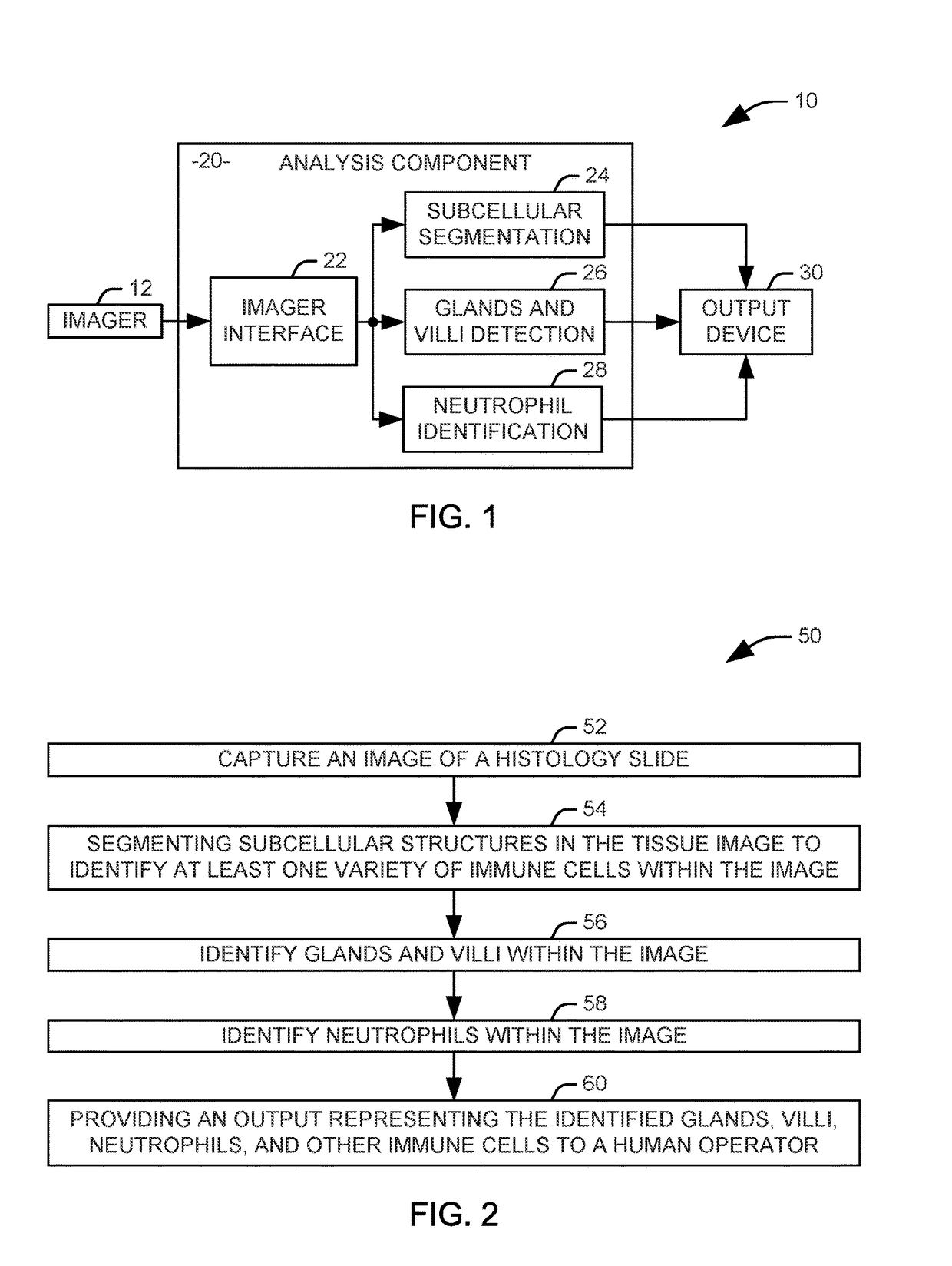Identification of inflammation in tissue images
a tissue image and image technology, applied in the field of medical images, can solve the problems of difficult segmentation of histology tissue images, time-consuming and laborious,
- Summary
- Abstract
- Description
- Claims
- Application Information
AI Technical Summary
Benefits of technology
Problems solved by technology
Method used
Image
Examples
Embodiment Construction
[0015]In general, this disclosure describes techniques for analyzing tissue images, such as hematoxylin and eosin (H&E) stained tissue images, to diagnose inflammatory diseases. There are four types of immune cells commonly analyzed in the diagnosis of inflammatory diseases: neutrophils, plasma cells, lymphocytes, and eosinophils, and the techniques described herein may be used to identify and classify these types of immune cells and provide analytic information that may assist diagnostic pathologists. Pathologists often rely on features of the subcellular structures to differentiate different types of immune cells, and accurate segmentation of the subcellular structures can help classify cell types. Further, architectural distortions of glands and villi are indicators of chronic inflammation, but the “duality” nature of these two structures causes ambiguity for their detection in H&E histology tissue images, especially when multiple instances are clustered closely together. In one ...
PUM
 Login to View More
Login to View More Abstract
Description
Claims
Application Information
 Login to View More
Login to View More - R&D
- Intellectual Property
- Life Sciences
- Materials
- Tech Scout
- Unparalleled Data Quality
- Higher Quality Content
- 60% Fewer Hallucinations
Browse by: Latest US Patents, China's latest patents, Technical Efficacy Thesaurus, Application Domain, Technology Topic, Popular Technical Reports.
© 2025 PatSnap. All rights reserved.Legal|Privacy policy|Modern Slavery Act Transparency Statement|Sitemap|About US| Contact US: help@patsnap.com



